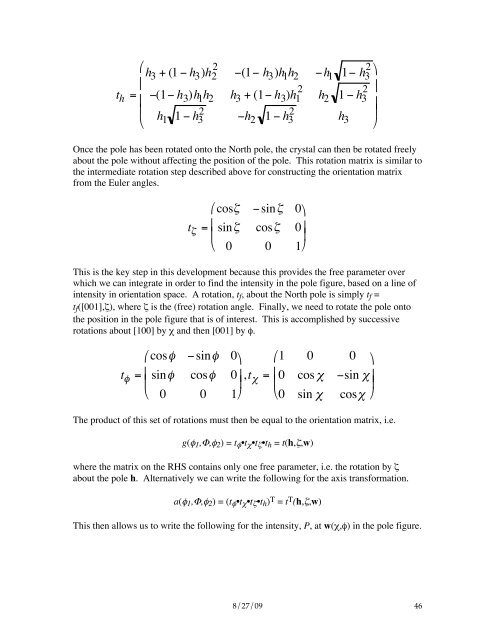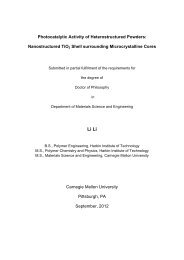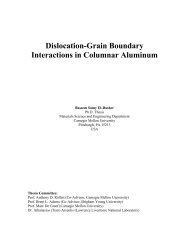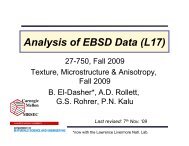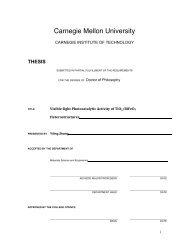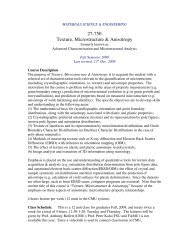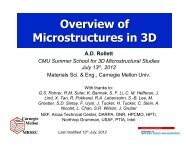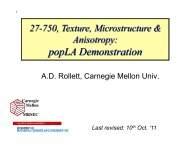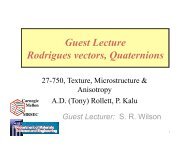¶ 3. Mathematical Representation of Crystal Orientation, Misorientation
¶ 3. Mathematical Representation of Crystal Orientation, Misorientation
¶ 3. Mathematical Representation of Crystal Orientation, Misorientation
Create successful ePaper yourself
Turn your PDF publications into a flip-book with our unique Google optimized e-Paper software.
"<br />
2<br />
h3 + (1 ! h3 )h2 $<br />
th =<br />
$<br />
!(1! h3 )h1 h2 $<br />
h1 1 ! h<br />
2<br />
#<br />
3<br />
2<br />
!(1! h3 )h1h2 !h1 1! h %<br />
3<br />
2<br />
2 '<br />
h3 + (1! h3 )h1 h2 1 ! h3 '<br />
!h2 1 ! h<br />
2<br />
3 h<br />
'<br />
3 &<br />
Once the pole has been rotated onto the North pole, the crystal can then be rotated freely<br />
about the pole without affecting the position <strong>of</strong> the pole. This rotation matrix is similar to<br />
the intermediate rotation step described above for constructing the orientation matrix<br />
from the Euler angles.<br />
# cos! "sin! 0&<br />
t ! = %<br />
sin!<br />
$ 0<br />
cos!<br />
0<br />
0 (<br />
1'<br />
This is the key step in this development because this provides the free parameter over<br />
which we can integrate in order to find the intensity in the pole figure, based on a line <strong>of</strong><br />
intensity in orientation space. A rotation, tf, about the North pole is simply tf =<br />
tf([001],ζ), where ζ is the (free) rotation angle. Finally, we need to rotate the pole onto<br />
the position in the pole figure that is <strong>of</strong> interest. This is accomplished by successive<br />
rotations about [100] by χ and then [001] by φ.<br />
# cos! "sin! 0&<br />
t ! = %<br />
sin!<br />
$ 0<br />
cos!<br />
0<br />
0 (<br />
1'<br />
,t ) =<br />
# 1 0 0 &<br />
%<br />
0<br />
$ 0<br />
cos )<br />
sin )<br />
"sin ) (<br />
cos) '<br />
The product <strong>of</strong> this set <strong>of</strong> rotations must then be equal to the orientation matrix, i.e.<br />
g(φ1,Φ,φ2) = tφ•tχ•tζ•th = t(h,ζ,w)<br />
where the matrix on the RHS contains only one free parameter, i.e. the rotation by ζ<br />
about the pole h. Alternatively we can write the following for the axis transformation.<br />
a(φ1,Φ,φ2) = (tφ•tχ•tζ•th) T = t T (h,ζ,w)<br />
This then allows us to write the following for the intensity, P, at w(χ,φ) in the pole figure.<br />
8/27/09 46


